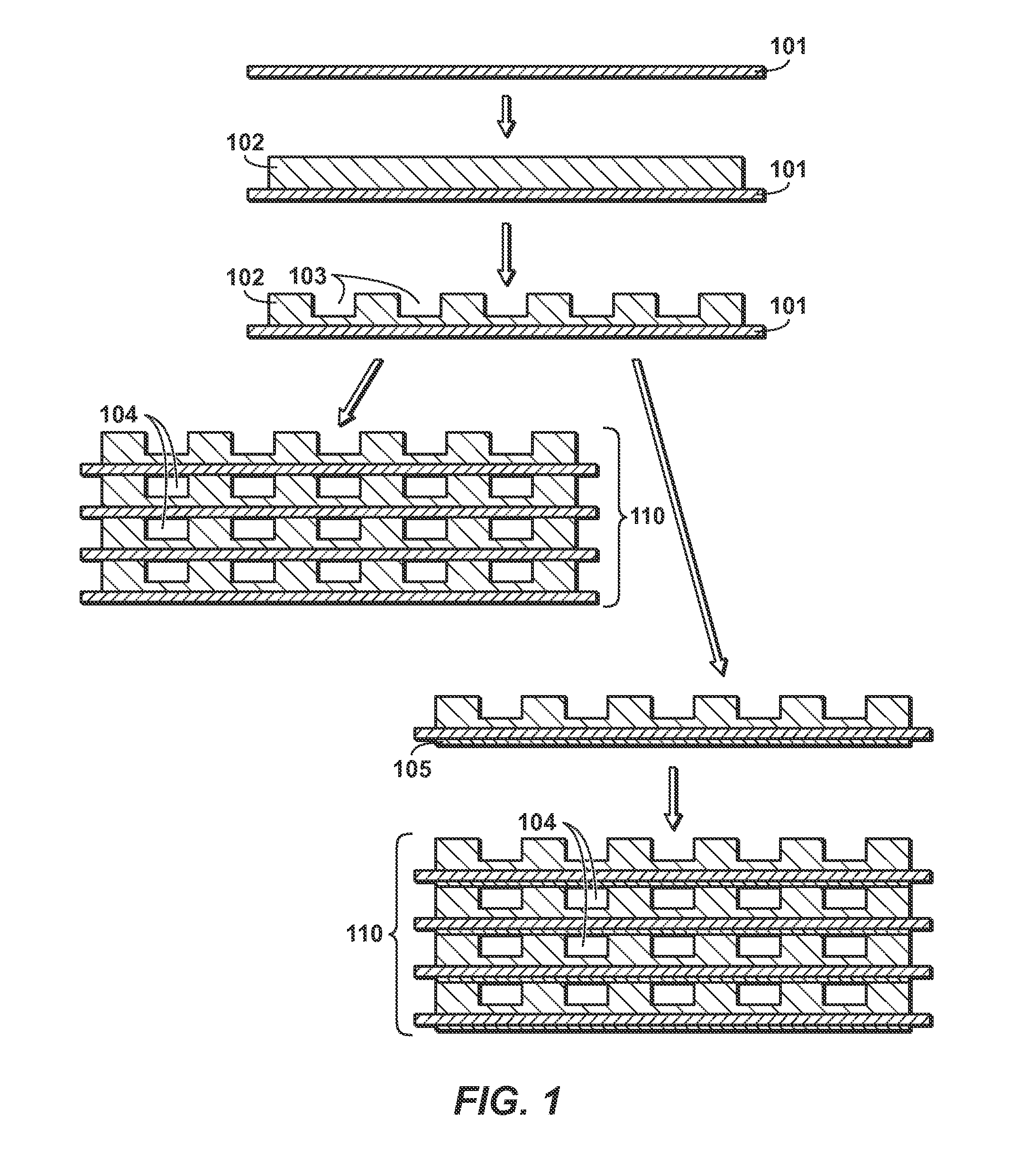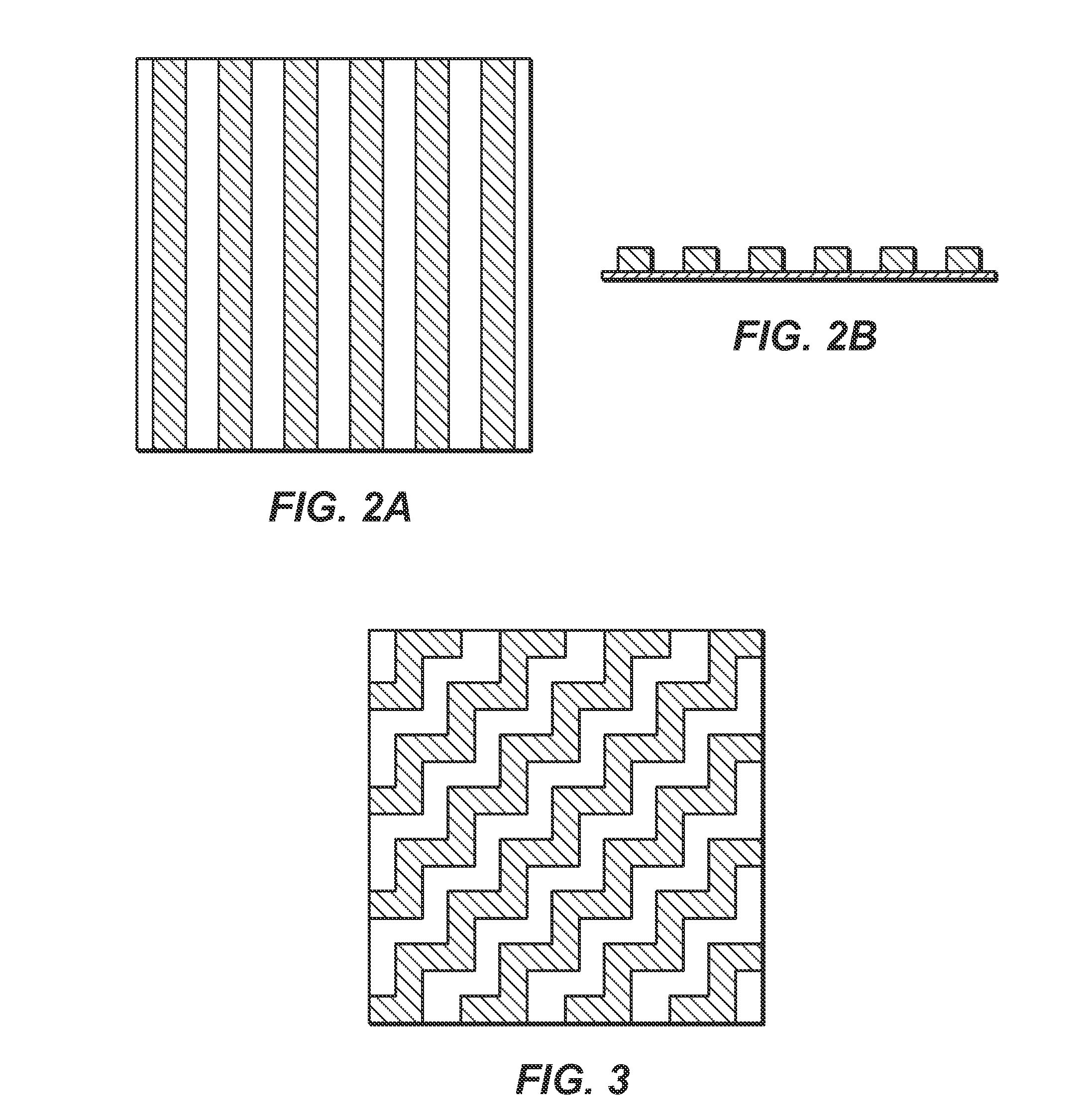High Capacity Structures and Monoliths Via Paste Imprinting
- Summary
- Abstract
- Description
- Claims
- Application Information
AI Technical Summary
Benefits of technology
Problems solved by technology
Method used
Image
Examples
example 1
[0103]A coating method is demonstrated. Flat stainless steel foil (316 SS) was cleaned with a 10% bleach solution and calcined in air at 500° C. for 4 hours. After calcination, a thin coating (1-2 um) of Zirconium-based primer (80% Aremco Ceramabond 685-N, 20% H2O by weight) was applied to the surface of the foil via spray coating. The primer was allowed to set by heating the sample to 250° F. for 4 hours in air. The foil was then held flat and a thin layer of paste was applied to the surface. The paste contained a zeolite, colloidal silica binder, sodium silicate, water, and methyl cellulose polymer. The paste was allowed to briefly set (very slight drying). Then a piece of corrugated SS foil was treated with a release agent (e.g. WD40) and subsequently pressed into the thin layer of paste. The corrugated foil was then removed from the paste, leaving behind the inverse features of the corrugated foil. After air drying, the imprinted structure was then calcined at 400° C. for 4 hour...
example 2
[0105]A coating method is demonstrated. A corrugated SS foil was placed flat on a surface and treated with a release agent (e.g. WD40). Next a piece of oxidized and primed mesh, with same pretreatment as for the flat foil in Example 1, was placed directly on top of the corrugated foil. The paste from Example 1 was pressed through the mesh (similar to silk screening), and the paste filled the corrugations of the underlying foil while simultaneously coating the mesh. Upon drying, the mesh was lifted from the corrugated foil (the “mold”), and the imprinted features remain on the mesh. This integrated ceramic / metal structure can undergo bending to a degree required for rolling into a monolith, FIG. 12A. Further, the ceramic is completely integrated into the mesh, and can be seen encasing the mesh when embedded and viewed at the cross-sectional image in FIG. 12B. For purposes of scale, the dots in the cross-sectional image are the mesh wires with a 40 μm diameter.
example 3
[0106]An example of construction of a structure is demonstrated. A structure from Example 2 was fabricated to dimensions of 6″×60″. This was then calcined at 700° C. for 4 hours. The leading edge of the coated foil was tack-welded to an arbor of ½″ diameter. This arbor has screw holes in both ends so that it can be assembled into a winding device. The foil and arbor was assembled into the winding device such that the molded features of the substrate were pointing down, and the flat side facing upwards. Tension was applied to keep the substrate taught. The substrate was then saturated with water so the subsequent paste would not dry quickly when applied to the exposed flat side. A thin layer of paste of the same composition from Example 2 was applied to the exposed face of the foil as the foil was wound around the arbor. The resulting structure was then allowed to dry in air for 10 hours and then slowly heated in an oven ramped to 200° F. over 5 hours. Finally, the structure was then...
PUM
| Property | Measurement | Unit |
|---|---|---|
| Fraction | aaaaa | aaaaa |
| Fraction | aaaaa | aaaaa |
| Fraction | aaaaa | aaaaa |
Abstract
Description
Claims
Application Information
 Login to View More
Login to View More - R&D
- Intellectual Property
- Life Sciences
- Materials
- Tech Scout
- Unparalleled Data Quality
- Higher Quality Content
- 60% Fewer Hallucinations
Browse by: Latest US Patents, China's latest patents, Technical Efficacy Thesaurus, Application Domain, Technology Topic, Popular Technical Reports.
© 2025 PatSnap. All rights reserved.Legal|Privacy policy|Modern Slavery Act Transparency Statement|Sitemap|About US| Contact US: help@patsnap.com



